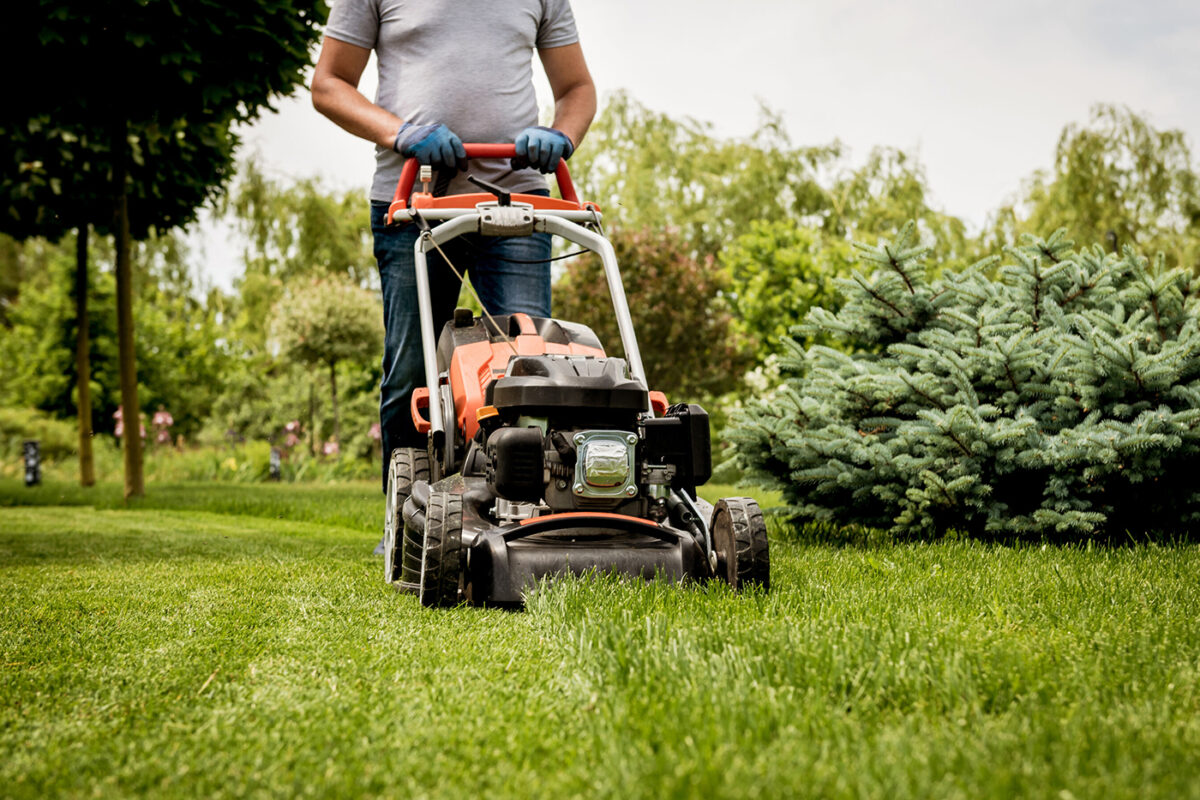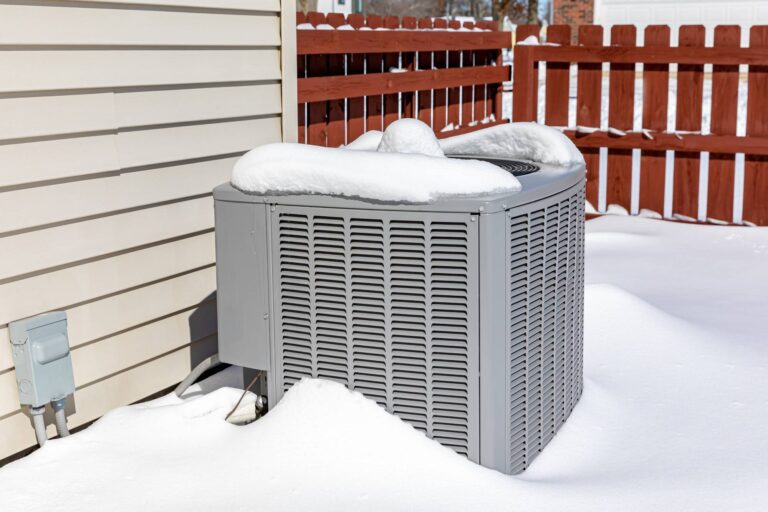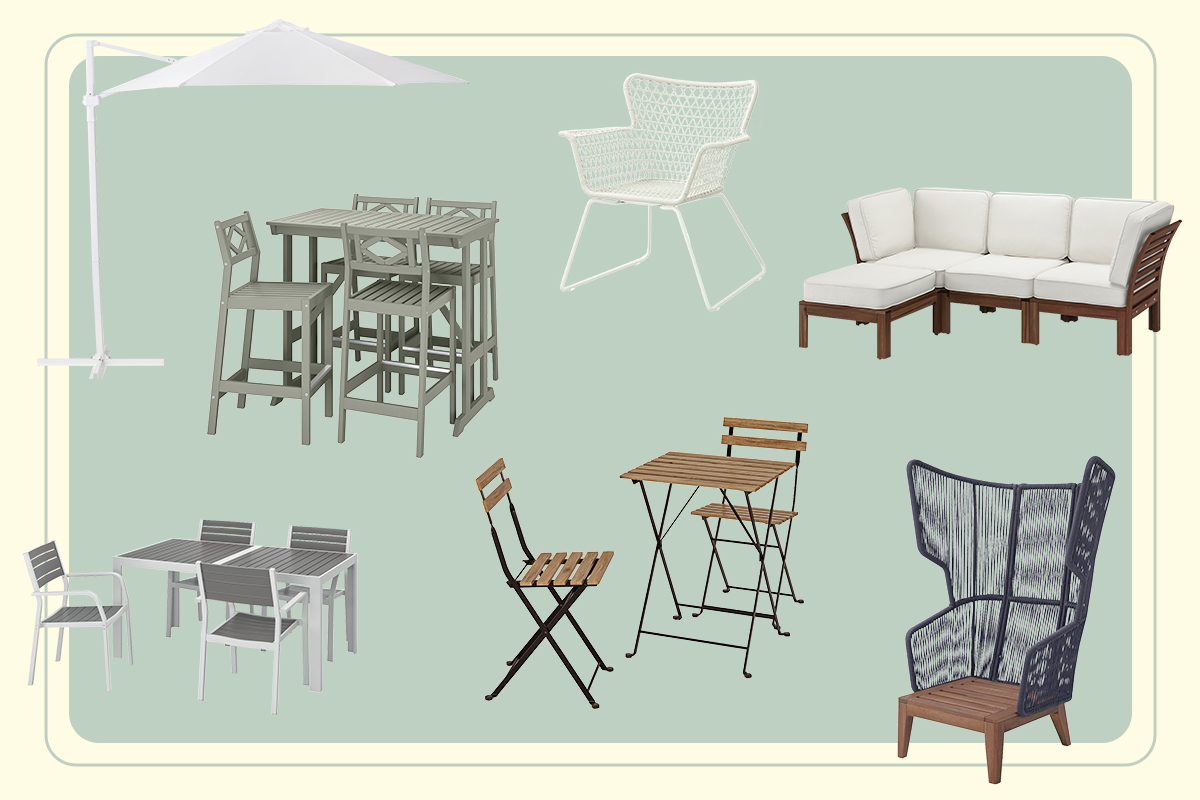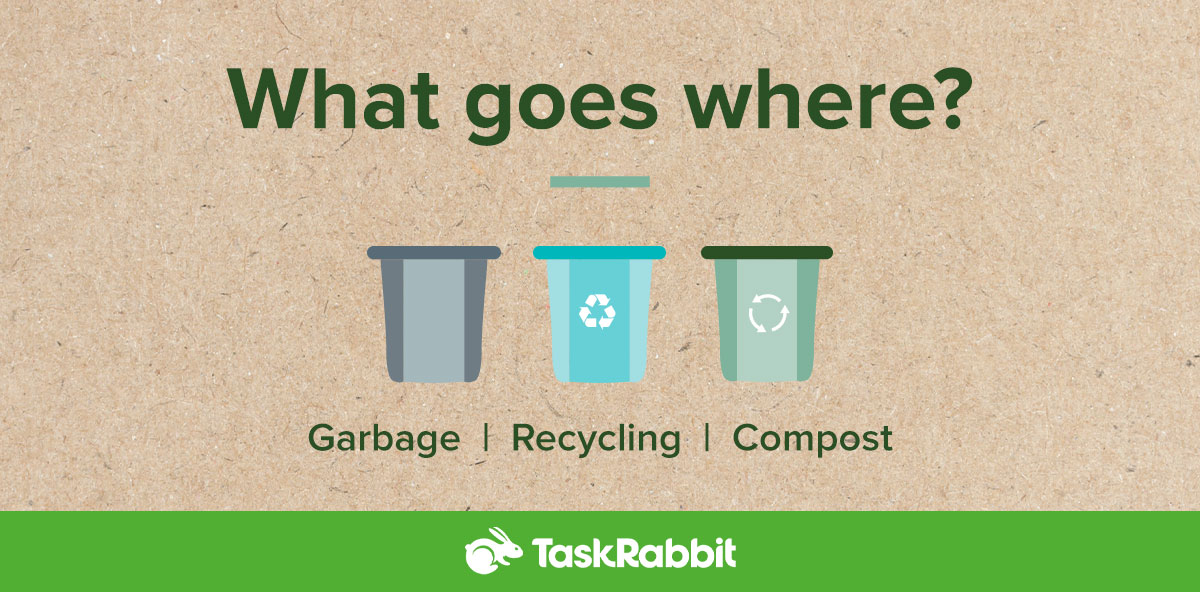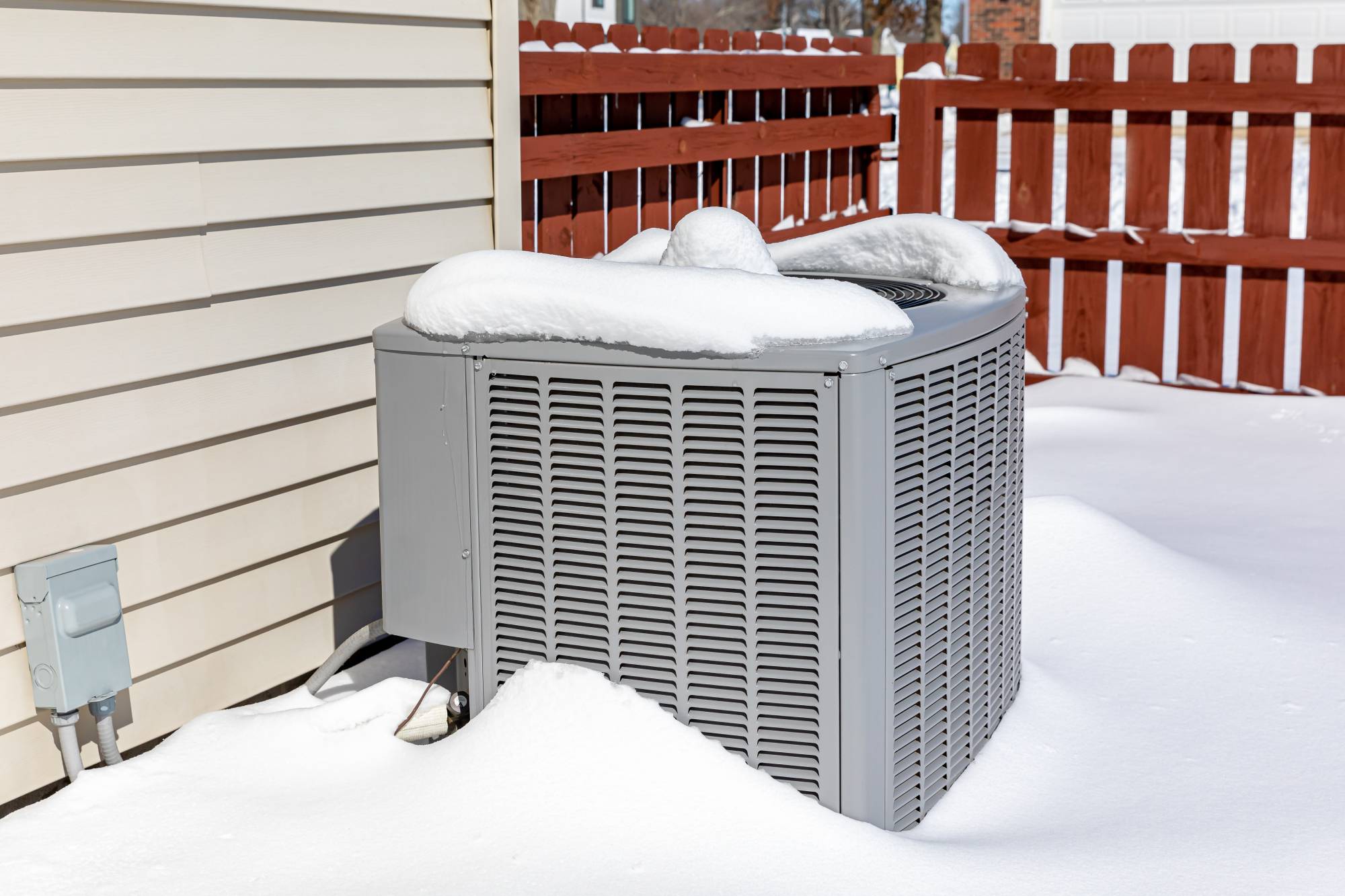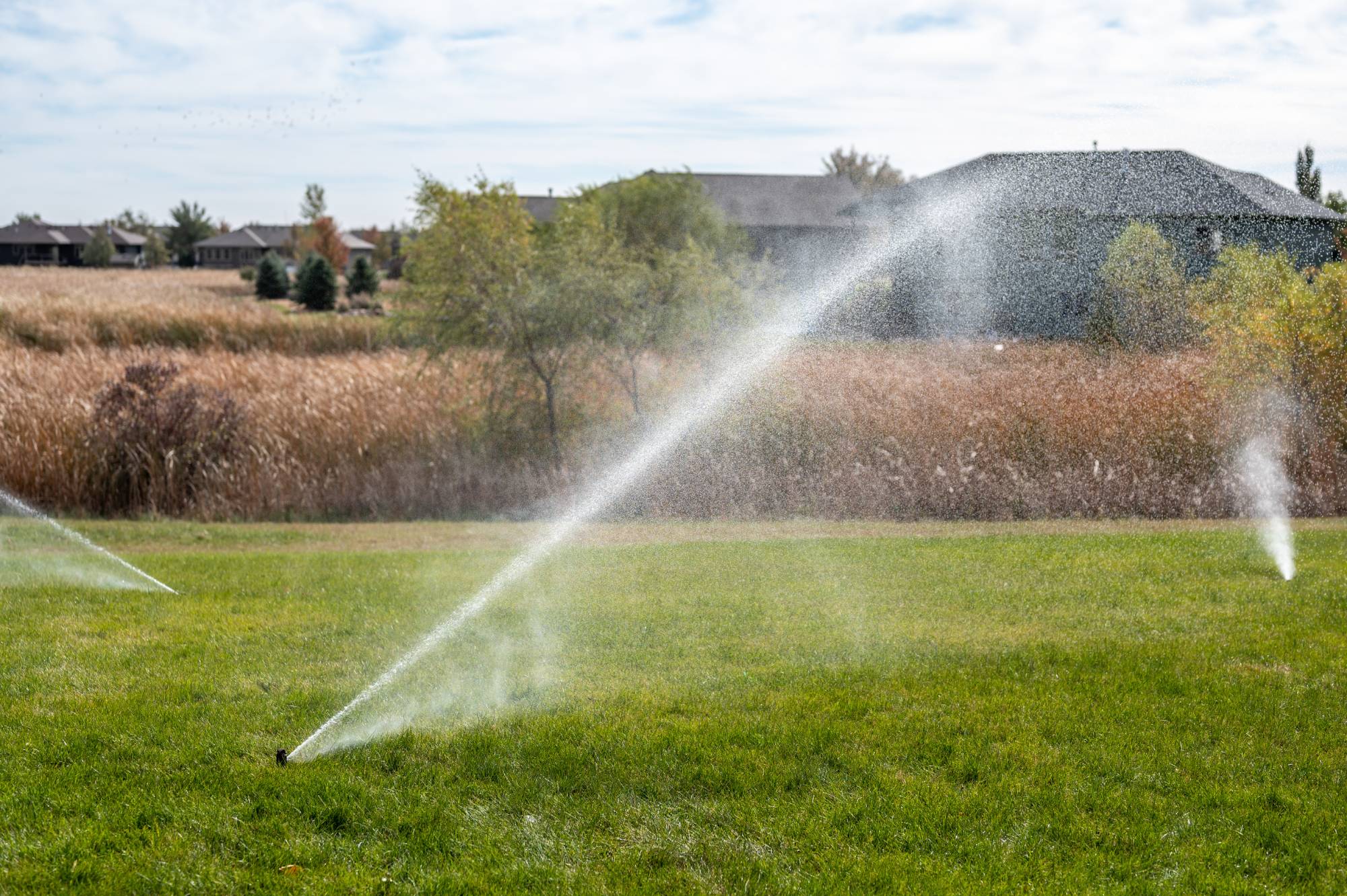Nothing packs a punch quite like the wow factor of a beautifully manicured lawn. The good news is achieving professional lawn results is simpler than homeowners might imagine. If you’re new to the world of lawn striping, read on to find out how to transform your yard into something straight out of the big leagues.
How Does Lawn Striping Work?
A blade of grass has two sides; a light side on one side and a dark side on the other. When you mow grass, the blade will bend revealing one of the two sides. Stripes are created when sunlight reflects off grass that is bent in different directions.
The best type of grass seed for lawn striping are cool season grasses, including grass types such as fine fescue and Kentucky bluegrass. When striping, it’s best to keep your mower blade sharp. Not only does the grass look better, but blades will bend over better also.
With the right tools anyone can can stripe their lawn. The time it takes to stripe a lawn depends on how long it takes for you to mow yours, but try to avoid the job when the grass is wet. The mower wheels and yard roller will only make your grass appear matted.
The final thing to keep in mind is mowing height. Cutting longer grass blades provide more distinct stripes compared to shorter blades. Plus, cutting too much of the grass height isn’t good for the health of the lawn. Aim to keep your lawn between two and a half to four inches long. Mow on a higher setting to keep your grass on the tall side, even if it’s only one-half inch, for optimal lawn striping results.
Steps to Stripe a Lawn

The easiest way to stripe your lawn is with a lawn striper kit. Kits are available as a tow-behind or as a push lawn roller; tow-behind lawn stripers attach to your push or riding lawn mower and come complete with mounting hardware. Lawn striper kits are available at home improvement stores and Amazon. Expect to pay around $100-150 for a decent lawn striping kit, and pay attention to the labeling to guarantee the roller is compatible with your lawn mower. You may have to fill the lawn striper with sand or water to provide enough weight to lay grass down in the direction of the lawn roller. With the lawn kit covered, follow the below steps for how to mow stripes.
- Start by removing any toys, tools, or other objects lying in the lawn.
- Then plan your design, selecting a straight driveway or path to follow for an even result. Looking ten feet ahead, instead of right in front of the riding or push mower, will also help with mowing a straight line.
- Mow the first stripe parallel to the path.
- Once you come to the end of the row, turn your mower, raising the mower deck.
- Then mow the next stripe in the opposite direction. If your turn marks are noticeable, mow a final strip around the edge of the yard to obscure them.
Lastly, remember to vary your mowing patterns. Avoid mowing in the same direction every time. For example, if you’ve been mowing north to south, try mowing east to west next time. This helps prevent grass from developing a permanent lean and encourages more even growth.
Other Lawn Mowing Patterns
Once you’ve mastered striping your lawn, kick things up a notch by trying out different patterns. Check out a few options below.
Checkerboard Lawn

For checkerboard striping, start by completing a set of straight lawn stripes. Then, simply lift the mower deck and turn the mower at a right angle to the first stripe to mow a second set of stripes. Again, finish by mowing the perimeter of the lawn to hide any turn marks.
Circle Lawn Striping

Stripes aren’t the only pattern option. Once you’re comfortable mowing lines, give circular striping a shot.
Start by mowing the perimeter of the lawn two times. Then turn off your mower and move it to where you want to make the first circle, typically in the center of the lawn. Start the mower and make the smallest circle possible. Mow the next circle in the opposite direction, overlapping slightly. Continue alternating circles. Once completed, mow a final stripe around the edges of your yard.
How to Mow Diamond Pattern

Another striping pattern is a diagonal pattern. Start by mowing a set of straight rows in alternating directions. Then, mow a second set of rows diagonally to the originally set, alternating each row. Finish by mowing around the perimeter again.
Intensify Stripes

For even more pronounced stripes, purchase a hand held lawn roller to bend the blades even further than the lawn mowing kit. Simply go back over your mowing stripes, rolling the grass in the same direction you mowed.
Mowing Around an Obstacle

When you have unmovable objects, such as a playset, flagpole, or tree, simply mow around it or make it a focal point. Keep your lines straight by looking at the area beyond the obstacle. When turning to cut in the opposite direction, mow over any unsightly turn marks to keep the stripes even.
How Do Professionals Stripe A Lawn?
Ever wondered how the MLB maintains its stunning ballparks? The secret is the use of reel mowers. These specialized lawn mowers require additional training to operate but provide superior quality cuts and can achieve very low cutting heights. While you don’t need a reel mower for baseball field or professional-looking results, it’s still interesting to learn about the tools behind the scenes.
Need Help Mowing Your Lawn?
The benefits of lawn striping are many. Alternating the direction of lawn striping enables all blades to get enough sun. Not only does striping keep grass at the same height throughout the growing season, but it serves as a guide when fertilizing or putting out new seed. If you need a hand with lawn mowing or keeping up with the demands of lawn care, look no further than affordable lawn mowing services on Taskrabbit. Outside of mowing, Taskers are ready to tackle any landscaping projects including pulling weeds, trimming hedges, and installing hardscaping.
Frequently Asked Questions

What is the best pattern to mow grass?
While not considered striping, cutting in concentric circles is an efficient mowing pattern as all turns are completed in the same direction. This technique is simple to maneuver and makes mowing around trees and flower beds a breeze
What is the best height to cut grass for striping?
Striping works best on longer blades of grass. Therefore, the best height to cut grass for striping is three to four inches.
What order should I mow my lawn?
Lawn work is best performed in the following order: trim, mow, edge, then blow. Start with weed whacking, followed by mowing and edging, and wrap up by blowing away any grass clippings from concrete or hardscape surfaces.
What is the easiest mowing pattern?
The easiest mowing pattern is striping straight lines. Checkerboard lawns are the next easiest, as you simply mow another set of straight lines at a 90-degree angle to the first pass.
Last updated on March 28, 2024 by Matt Beier

